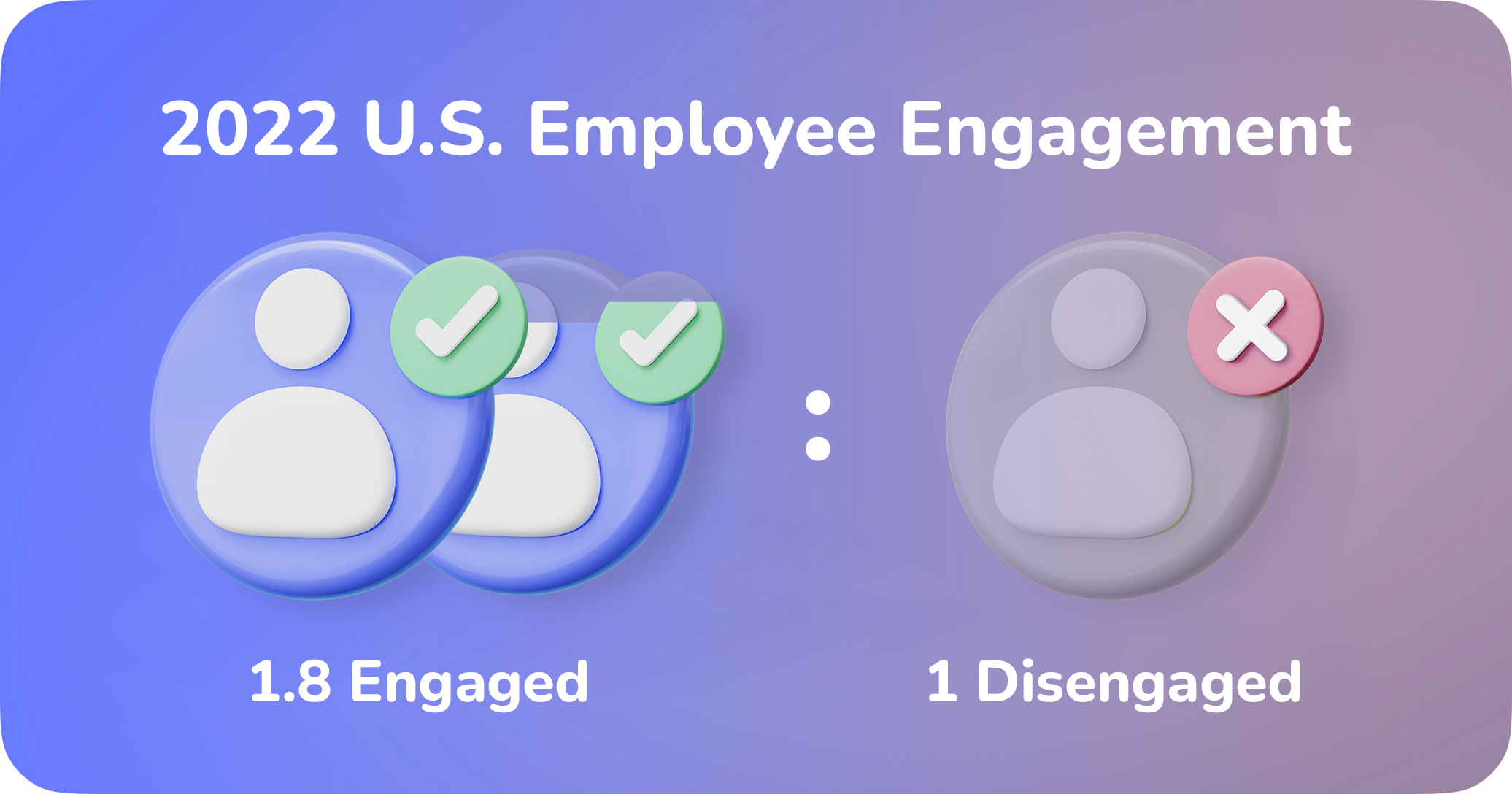
The Top 5 Tips for Measuring Employee Engagement
Is your organization aiming to foster highly engaged employees? Work towards employee satisfaction with these top tips to implement in your employee engagement strategy.



Is your organization aiming to foster highly engaged employees? Work towards employee satisfaction with these top tips to implement in your employee engagement strategy.


Measuring engagement is important for a number of reasons. Engagement levels help you understand how committed and motivated your employees are, which in turn can affect their productivity and job satisfaction. When employees are engaged, they tend to be more innovative and collaborative, which can lead to better business outcomes.
Measuring employee engagement can help you identify areas where your organization may need to improve. For example, if you find that your employees are disengaged, it may be a sign that your workplace culture needs to be improved or that your employees are not receiving the support they need to perform their jobs effectively.
Finally, measuring your team's engagement can help you retain your best employees. When employees feel engaged and satisfied with their work, they are more likely to stay with their current employer, and employee retention greatly lowers company costs associated with hiring and training new employees.
Research from Gallup has found the ratio of engaged to disengaged workers in the U.S. is 1.8-to-1, down from 2.1-to-1 in 2021 and 2.6-to-1 in 2020. This is the lowest recorded ratio of engaged to actively disengaged employees in the U.S. since almost a decade earlier in 2013. The record high was a ratio of 2.7-to-1 recorded in 2019.

Overall, when organizations successfully measure engagement, they can create a more positive and productive workplace and employee experience, leading to better outcomes for the organization and its employees.

When measuring your employees' engagement, it's important to use a combination of quantitative and qualitative methods since each method provides unique insights into very different aspects of employee engagement.
By using a combination of methods, organizations can identify the underlying causes of low engagement, develop targeted interventions to address specific issues, and ultimately improve overall employee engagement and productivity. Plus, using various methods helps validate and triangulate findings, reducing the risk of relying on biased or incomplete data.
It's important that employees' feedback remains anonymous and/or confidential because it can help to reduce the fear of negative consequences that employees may receive for providing honest feedback. When employees trust their feedback is confidential, they are more likely to provide detailed and accurate feedback about their experience.
Confidentiality also helps to protect employees' privacy, ensuring that their personal information and opinions are not shared with others without their consent. This can help to build trust between employees and the organization and foster a culture of community and open communication.
Anonymity is particularly important in cases where the feedback may be critical of the organization or its leadership. When employees feel that they can provide honest feedback without fear of negative consequences, they are more likely to share their opinions and ideas, which can ultimately benefit the organization by identifying areas for improvement and addressing concerns before they escalate.

Setting clear benchmarks and tracking progress allows organizations to measure the effectiveness of their engagement initiatives over time. By establishing benchmarks or goals for employee engagement levels, organizations can track their progress toward these goals and adjust their strategies as needed.
Clear benchmarks provide a target for the organization to work towards, creating a sense of direction and purpose. By setting achievable goals, organizations can motivate employees to work towards improving their engagement levels and create a culture of continuous improvement.
Tracking progress also helps organizations identify areas where they are making progress and areas where they may need to readjust their approach. Over time, organizations can identify trends and patterns and make data-driven decisions about how to improve engagement levels.
Also, tracking progress helps organizations communicate the impact of their engagement initiatives to stakeholders such as employees, managers, and shareholders. Through regular updates on engagement levels and progress towards goals, organizations can demonstrate their commitment to employee engagement and build trust and loyalty among stakeholders.
Read more of Confetti's tips 👉 Try some team building with our Top 5 Virtual Employee Engagement Activities!
Issuing annual employee engagement surveys is important for several reasons, including measuring employee satisfaction and engagement, identifying areas for improvement, and ultimately improving organizational performance.
One commonly used metric in employee engagement surveys is the Employee Net Promoter Score (eNPS), which measures the likelihood of employees recommending their workplace to others. A high eNPS indicates that employees are highly engaged and satisfied with their workplace, while a low eNPS suggests that improvements are needed to increase employee satisfaction and engagement.
Other employee engagement metrics that may be included in surveys include job satisfaction, work-life balance, career development opportunities, communication and feedback processes, and overall organizational culture.
By collecting data on these metrics through annual employee engagement surveys, organizations can identify trends, patterns, and areas for improvement in their workplace culture and practices. This information can then be used to develop strategies for improving employee engagement and performance, ultimately leading to a more productive and successful organization.
Conducting one-on-one meetings with employees is an effective way to measure employee engagement. These meetings provide an opportunity for managers to connect with employees on a more personal level, discuss their work experience, and understand their level of engagement with the company. Here are some more benefits of one-on-ones:
Read more 👉 Explore more strategies in How Connection Boosts Employee Engagement and Performance!
Measuring employee engagement helps create a positive work environment and achieve organizational success. By implementing metrics, listening to your employees regularly, and taking action based on survey results, you can better understand your employees' needs and improve their overall job satisfaction and sense of belonging.
By making your employee engagement strategy a priority, you can foster a healthy workplace culture that promotes growth, productivity, and success for both employees and the organization as a whole.
Here at Confetti, we’re here to help you build employee engagement through well-planned, educational, and entertaining team building activities. Contact Plan@withconfetti.com to get started!











